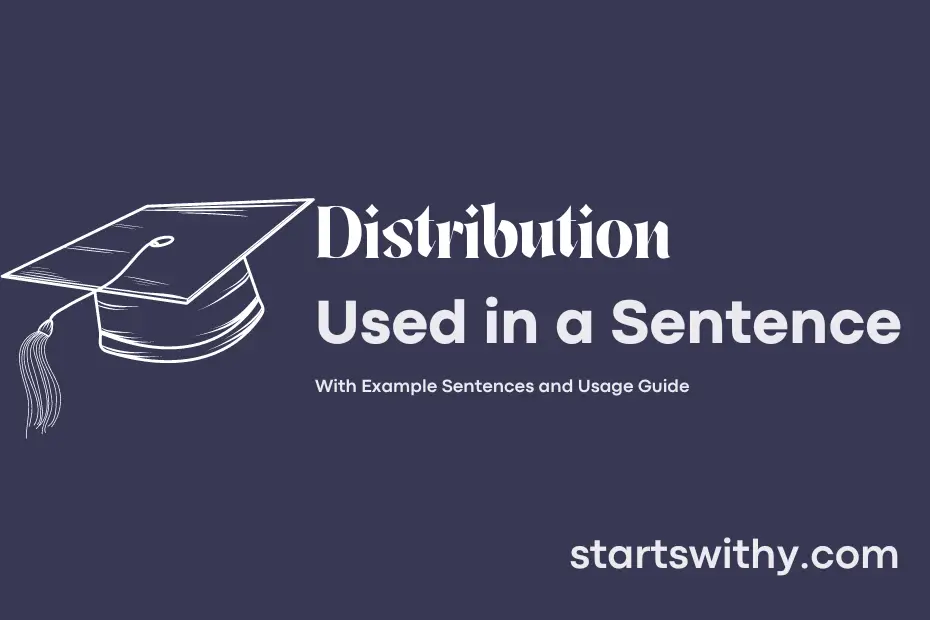Distribution is the process of delivering goods or services from a producer to the end consumer, ensuring that products are available where and when they are needed. This crucial aspect of the supply chain involves everything from inventory management to transportation and logistics.
Efficient distribution is essential for businesses to meet customer demand, minimize costs, and maximize profits. By carefully managing the flow of goods, companies can optimize their operations and maintain a competitive edge in the marketplace.
7 Examples Of Distribution Used In a Sentence For Kids
- Distribution means giving out things to different people.
- In a distribution, everyone gets their share.
- The teacher will do a distribution of crayons to all the students.
- During Diwali, there is a distribution of sweets among family and friends.
- We can practice distribution by sharing our toys with others.
- The postman helps in the distribution of letters to different houses.
- At a birthday party, there is a distribution of gifts to all the guests.
14 Sentences with Distribution Examples
- Distribution of study materials will take place in the auditorium tomorrow.
- Please refer to the timetable for information on the distribution of exam dates.
- The college canteen handles the distribution of food for the hostel mess.
- The fees distribution deadline has been extended to next week.
- The library staff is responsible for the distribution of reserved books.
- The student council is organizing a distribution drive for stationery supplies.
- Make sure to check your emails for updates on the distribution of course materials.
- The online portal will provide information on the distribution of hall tickets.
- The student ambassador will oversee the distribution of event passes.
- The academic office handles the distribution of scholarship funds.
- The sports department will manage the distribution of sports equipment.
- Please line up in an orderly manner for the distribution of certificates.
- The university bookstore is responsible for the distribution of textbooks.
- The faculty will provide guidelines on the distribution of project topics.
How To Use Distribution in Sentences?
To use the word Distribution in a sentence, you need to understand its meaning first. Distribution refers to the way in which something is shared out among a group or spread out across a certain area. Here is a simple guide on how to properly use the word in a sentence:
-
Identify the context: Understand the context in which you want to use the word Distribution. It could be related to sharing resources, spreading information, or arranging items in a particular way.
-
Choose the right form: Distribution can be used as a noun or a verb in a sentence. Make sure you select the correct form based on the structure of your sentence.
-
Construct your sentence: Once you have a clear understanding of the context, construct a sentence that includes the word Distribution. For example, “The distribution of food among the refugees was done efficiently.”
-
Check for accuracy: Ensure that the word Distribution fits well in the sentence and conveys the intended meaning clearly.
-
Practice using the word: To become more comfortable with using the word Distribution, try incorporating it into different sentences in various contexts.
Remember, the key to effectively using Distribution in a sentence is to understand its definition and use it appropriately in the given context.
Conclusion
In conclusion, the sentences with distribution exemplify different ways in which items, resources, or information can be divided or spread out among certain individuals or groups. These sentences highlight the varying methods or patterns of allocation, showcasing the diverse ways in which distribution can occur in different contexts.
Whether it’s the distribution of goods in a supply chain, the allocation of tasks in a team, or the spread of data across a network, these sentences illustrate the importance of fair and efficient distribution. By understanding the intricacies of distribution as reflected in these examples, we can better comprehend how resources are divided and shared in various scenarios, leading to more informed decision-making and management of distribution processes.



